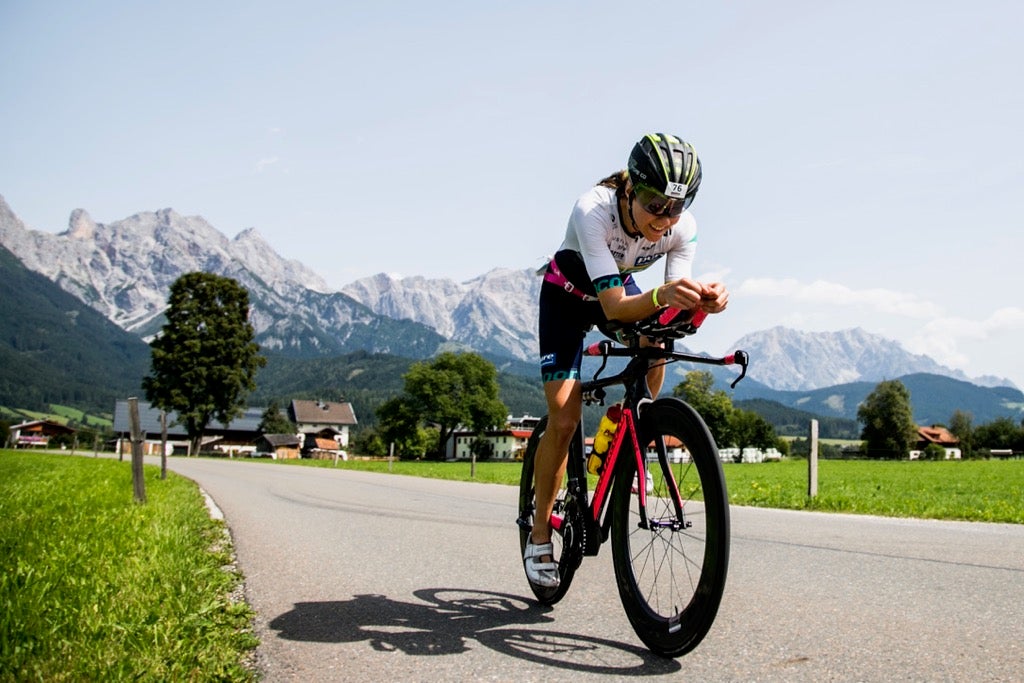Why the Perfect Saddle Alone Won't Keep Your Bum Happy

Photo: Jan Hetfleisch/Getty Images for Ironman
Discomfort down under can be more than just the wrong seat. Two bike fit experts weigh in on proper posture and positioning.
There are only a few points where flesh meets machine on a bike, and if that connection is off, no fancy products will make you faster. There are three key ingredients to successful cycling: a bike that is ergonomically positioned to the rider’s needs, sport-specific fitness, and sitting atop the bicycle with healthy posture. If any of these ingredients is lacking, performance will suffer. Of the bunch, posture is the most abstract, but an understanding of how and why to sit with healthy posture can improve the important relationship between you and your bike. First, healthy cycling posture means sitting with an elongated and neutral spine. This usually starts from a slight forward roll of the pelvis. However, an extreme forward roll of the pelvis can be just as bad as an extreme rearward roll, so it is important to find a balance. Riding with good posture is important for a number of reasons, but most importantly it will reduce your chance of back pain or injury. Poor posture effectively shortens your torso, which can make the reach to the handlebar or aerobar feel long and lead to lower back issues. Riding with good posture allows you to keep your core muscles engaged, improving pedaling efficiency and reducing strain on the arms. Good posture also allows your lungs to fully expand and your stomach to function properly—both incredibly important for a successful race.
 The most likely cause of poor posture, however, usually comes down to a poor saddle selection. Riding with good posture can force the rider to bear more pressure on their genital region—with the right saddle, this is tolerable. On the wrong saddle, a rider will often roll their pelvis backwards or shift backwards to fix saddle discomfort, forcing them back into a poor posture position. In other words, when trying a new saddle, it’s essential to sit right first, no matter what. Don’t let the saddle dictate your posture.
The most likely cause of poor posture, however, usually comes down to a poor saddle selection. Riding with good posture can force the rider to bear more pressure on their genital region—with the right saddle, this is tolerable. On the wrong saddle, a rider will often roll their pelvis backwards or shift backwards to fix saddle discomfort, forcing them back into a poor posture position. In other words, when trying a new saddle, it’s essential to sit right first, no matter what. Don’t let the saddle dictate your posture.
Many modern-day saddles now incorporate wide pressure relief grooves to unweight the perineum and to load the pelvis instead. Finding the appropriate saddle is as much a function of the rider’s anatomy as their riding position. Due to the triangular shape of the pubic ramus bone, the more severe the pelvic rotation, the narrower the contact width is with the saddle, this is why we see split saddles almost exclusively on triathlon bikes.
However, getting used to a split saddle can take a little while. ISM’s operations commander David Bunce says that a split saddle “completely removes the pressure from the body’s soft tissue/perineum and places it on the pubic rami bones. Although a much safer place to put the pressure, some riders of traditional, or other saddles, are not accustomed to this and a short conditioning period can be beneficial.”
Given the variables of the saddle/rider relationship there is no way to say with 100 percent confidence that a certain saddle is the best for any rider, however a good bike fit, the right saddle, and an understanding of posture can pay large dividends on the road.
Jonathan Blyer is the owner of ACME Bicycle Co. in Brooklyn, NY and one of only a handful of Retul-certified master bike fitters in the U.S. He also teaches the art and science of bike fit at the Guru Academy in Bethel, Conn. Colin Tanner is a Guru and Retul-certified bike fitter, a USA Cycling-certified coach, and a competitive road and cyclocross racer.